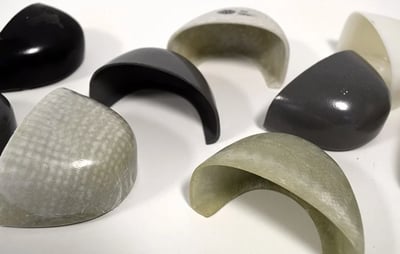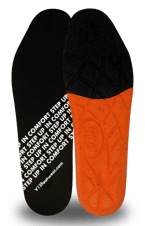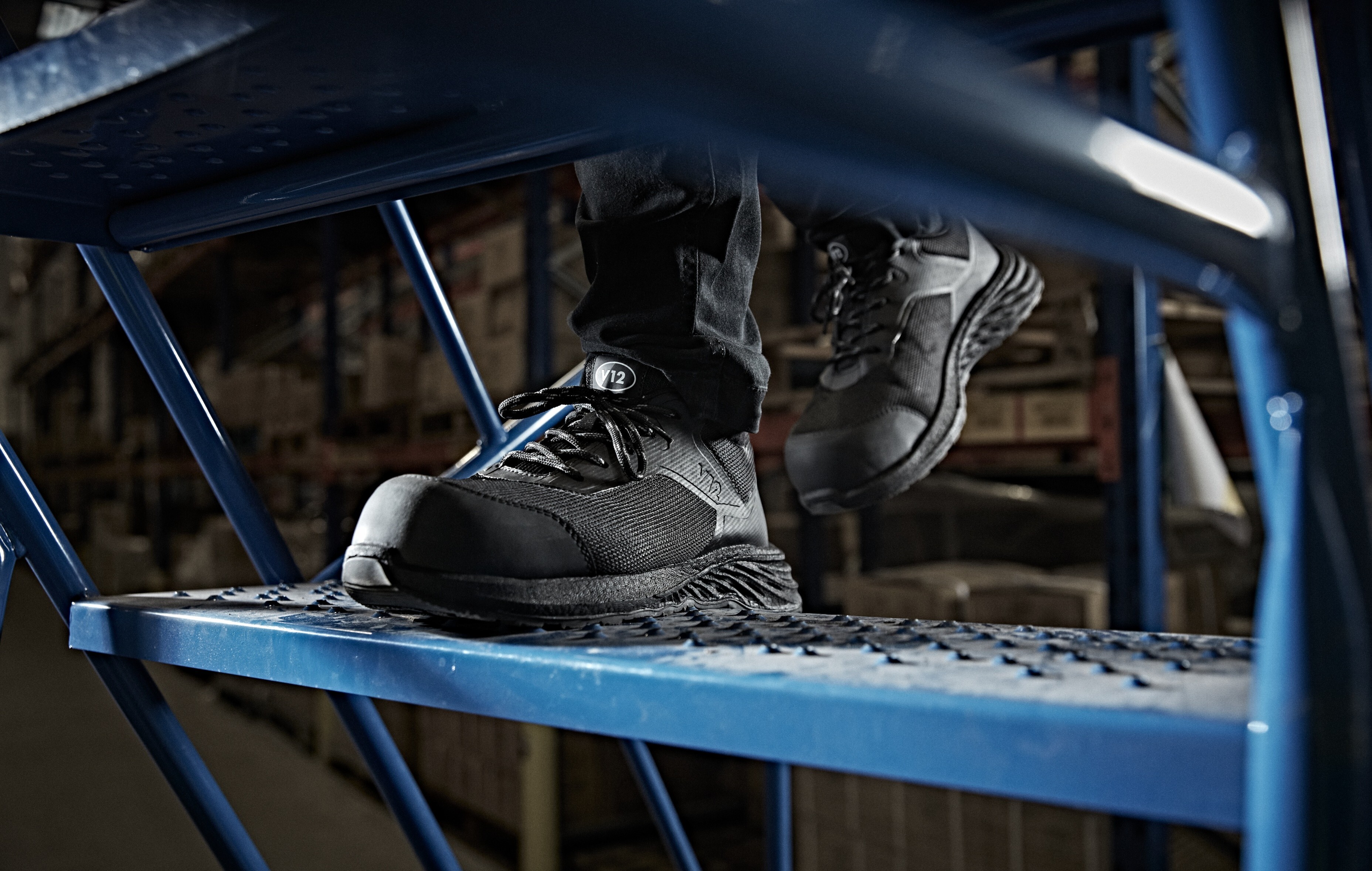The insole is a very effective and important footwear accessory, bringing comfort, relief and enhanced foot health to hundreds of thousands of wearers every day.
A commonly asked question we hear is 'can I wear more than one insole in my footwear?' And it’s a fair question. After all, more insoles mean more comfort right? Well, not when it comes to safety boots.
You might have heard or read online that it's ok to put more than one insole in your footwear to give you extra comfort or support. Well, that might be true if you're wearing trainers or you need a bit more height in your footwear. But with safety boots, adding more than one insole is a bad idea. It’s less about can you wear more than one insole and more about should you. Here’s why.
It compromises safety in the toe area
 When a second insole is put into a boot, the foot moves higher up. This is a big safety issue because when a toecap is tested, there must be a set amount of space between it and the foot, so if a toecap gets impacted, this distance or ‘protective clearance height’ ensures the toes don’t get crushed when the toecap is pushed downward in the event of an accident.
When a second insole is put into a boot, the foot moves higher up. This is a big safety issue because when a toecap is tested, there must be a set amount of space between it and the foot, so if a toecap gets impacted, this distance or ‘protective clearance height’ ensures the toes don’t get crushed when the toecap is pushed downward in the event of an accident.
Adding another insole means this space lessens, so the dangers of toecap crushing is increased.
So, leave your insole number to just one. Otherwise, the component designed to protect you could end up being the thing that causes your injury.
It compromises comfort in the heel area
A well-constructed and well-fitting boot will support the foot and align with its shape. But adding another insole - particularly if you’re wearing a safety shoe or boot with a curved heel shape - will push the foot up, which means it could end up rubbing on material that was previously cradling or supporting it. And this is a one-way ticket to blisters and pain. And if you’re standing or walking for prolonged periods of time on a shift, this can quickly become a big problem.
It compromises anti-static safety
 The anti-static properties of a safety boot can easily be compromised if two insoles are put inside. Note - the electrical resistance of this type of boot is tested with only one footbed in place, so if you add an additional insole, the anti-static properties will be interfered with and become non-compliant. Anti-static footwear and insoles are designed to protect sensitive equipment from static shock, charges or sparks - but faulty equipment can cause electric shocks for the user, so this is definitively a safety feature that mustn’t be compromised.
The anti-static properties of a safety boot can easily be compromised if two insoles are put inside. Note - the electrical resistance of this type of boot is tested with only one footbed in place, so if you add an additional insole, the anti-static properties will be interfered with and become non-compliant. Anti-static footwear and insoles are designed to protect sensitive equipment from static shock, charges or sparks - but faulty equipment can cause electric shocks for the user, so this is definitively a safety feature that mustn’t be compromised.
Pictured: VS150 Energyse II Insoles have been designed with anti-static properties built into their material.
Want to find out more about electrical standards in safety footwear? Head to this blog for answers.
FINAL TIPS ON INSOLES
An insole with too much cushioning may do more harm than good to your feet. How? Find out here.
When we say we only recommend one insole, it needs to be the right insole. A truly effective footbed should:
- Support the wearer’s specific arch height
- Improve joint alignment and lower limb health
- Reduce foot pain such as Plantar Fasciitis
- Ease foot pressure and absorb shock
- Be available in the right fit and for a male or female foot shape
DYNAMIC ARCHtm
V12’s Dynamic ArchTM insoles have been specifically developed to include each of the above benefits and therefore provide the comfort that you were seeking in the beginning.
Find your own arch height in minutes and get the right insole for you by heading to the page below.




